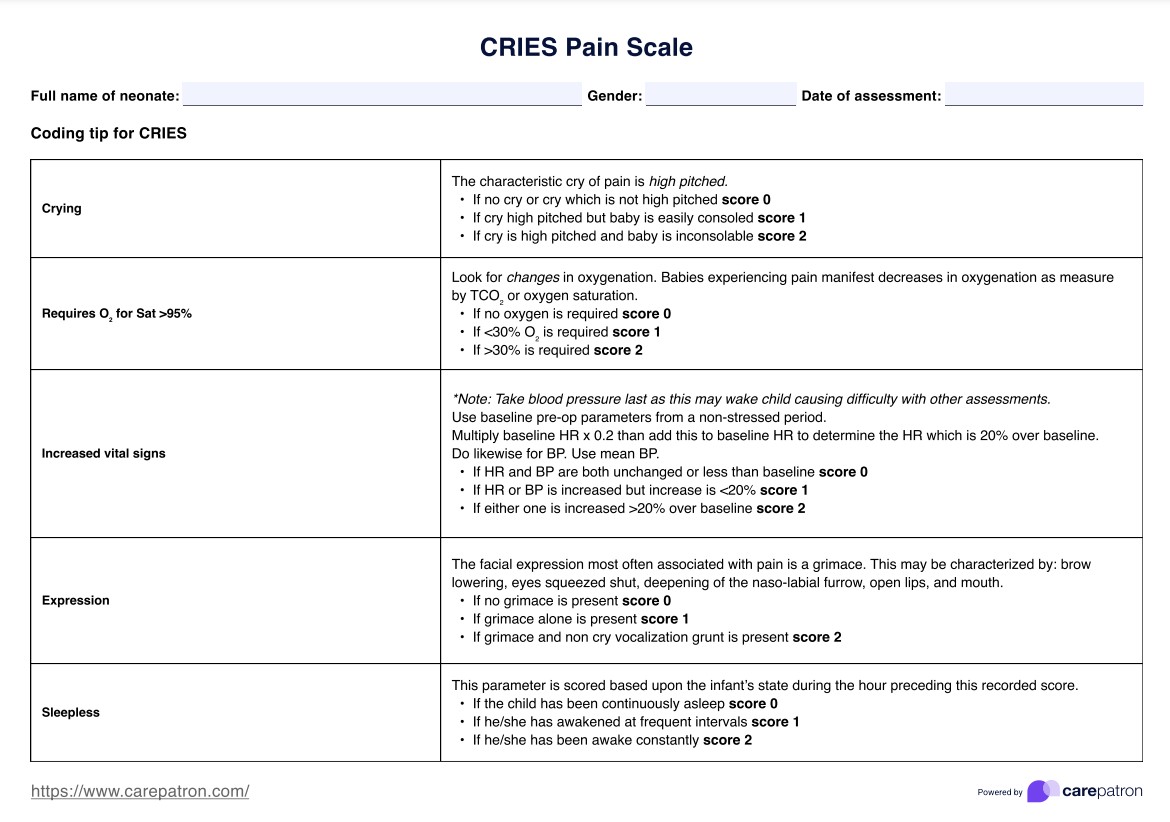Each of the five items is scored from 0 to 2, with the total score ranging from 0 to 10. Higher scores indicate more severe pain.

CRIES Pain Scale
Download the CRIES Pain Scale PDF to assess pain levels in a postoperative newborn child and determine the next steps.
Use Template
CRIES Pain Scale Template
Commonly asked questions
The CRIES Pain Scale should be used regularly to assess and monitor infants' pain, particularly after painful procedures or during ongoing pain management.
The CRIES Pain Scale relies on observable behaviors, which may be influenced by factors such as gestational age, temperament, and underlying medical conditions.
EHR and practice management software
Get started for free
*No credit card required
Free
$0/usd
Unlimited clients
Telehealth
1GB of storage
Client portal text
Automated billing and online payments











